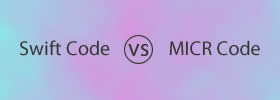Difference between Cappuccino and Espresso
Key difference: Cappuccino and espresso are two different types of coffee beverages consumed by people all over the world. The main difference between cappuccino and espresso is based on their individual composition and method of preparation.
Espresso and Cappuccino both are two different types of coffee. Normally, a cup of coffee is brewed by mixing hot water with the grounded or roasted coffee beans, and milk or cream with sugar added, according to the taste. There are types of popular coffee beans, Coffee Arabica and Coffee Robusta. Coffee gained its popularity as a beverage which is consumed after dinner in many countries.
 ‘Espresso’ is made by the same type of coffee beans which are used to make regular coffee. Although, the coffee used for making espresso are finely grounded and roasted before its use. Espresso is widely consumed in Italy and most parts of Europe. Superior coffee blends like Arabica and some times darker roasted beans are also used to make espresso in order to get a stronger flavor. It is the brewing technique which makes the espresso special.
‘Espresso’ is made by the same type of coffee beans which are used to make regular coffee. Although, the coffee used for making espresso are finely grounded and roasted before its use. Espresso is widely consumed in Italy and most parts of Europe. Superior coffee blends like Arabica and some times darker roasted beans are also used to make espresso in order to get a stronger flavor. It is the brewing technique which makes the espresso special.
Espressos are made by using an espresso machine; the very fine ground coffee powder is packed into a porta-filter and inserted into the machine. The water is heated to 190-197 degrees, and it is then forced under pressure through the porta-filter of fine coffee to produce, viola ‘Espresso’! It is a pressurized brewing process, which makes the coffee full of flavor. Also, it is never mixed with milk or cream. Which is why, it is used as a base for other drinks such as mochas, macchiato, lattes and cappuccino. Also, do not feel bad about calling someone out when they say, "expresso", because there is no "X" in ‘Espresso’.

Cappuccino is an aromatic coffee made by mixing milk steamed milk foam and espresso. It is widely consumed by Italians after breakfast. A common cappuccino is made in 1/3 proportions, which means a proper ‘cappuccino’ is made of 1/3 part espresso, 1/3 part steamed milk, and 1/3 part frothed milk. The espresso and steamed milk are poured together and the frothed milk is scooped on top; which sure makes the drink subjective and can be ordered in several different ways.
To make the cup of ‘Cappuccino’ different or tastier, a sprinkle of cinnamon or cocoa powder can be added on the top of the foam. It enhances the taste; one can also consider using low fat, skimmed or soy milk as an alternative. Also, flavored syrups like orange, vanilla, etc. are added to the coffee to get a different taste; one can use chocolate syrup or powder to make a more delicious combination of cappuccino. Skilled coffee makers make small designs on the froth at the top of the cup.
Comparison between Cappuccino and Espresso:
|
|
Cappuccino |
Espresso |
|
Derived from |
Coffea Plant |
Coffea Plant |
|
Origin |
Italy in 17th century |
Arabian Peninsula in 16th century |
|
Type |
It is suppose to be hot. |
It taken hot. |
|
Method of preparation |
It is made by adding steamed milk to espresso. |
It is made by grounding coffee and forcing hot water through it at high pressure. |
|
Ingredients |
It contains 1/3 part espresso, 1/3 part steamed milk and 1/3 part frothed milk. |
It only contains grounded coffee powder and hot boiling water. |
|
Milk |
It contains hot milk or foam milk. |
It contains no milk. |
|
Flavor |
It has less coffee flavor as compared to other types. |
It is high coffee flavor. |
|
Variations |
It is a kind of variation. |
It is a base for many variations. |
|
Flavor types |
Dark brown, beige, black, light brown, white. |
Caffe Latte, Caffe Mocha, Caramel Maccchiato, Caramel Brulee Latte, etc. |
|
Quantity |
It is taken in regular or large quantity. |
It is taken in small quantity. |
|
Taste |
It is sweet and not so strong in taste. |
It is strong and bitter in taste. |
|
Machine |
It may or may not require machine for preparation. |
It requires machine for preparation. |
Image Courtesy: gourmetcoffeecorner.com, blog.studyabroad101.com









Add new comment